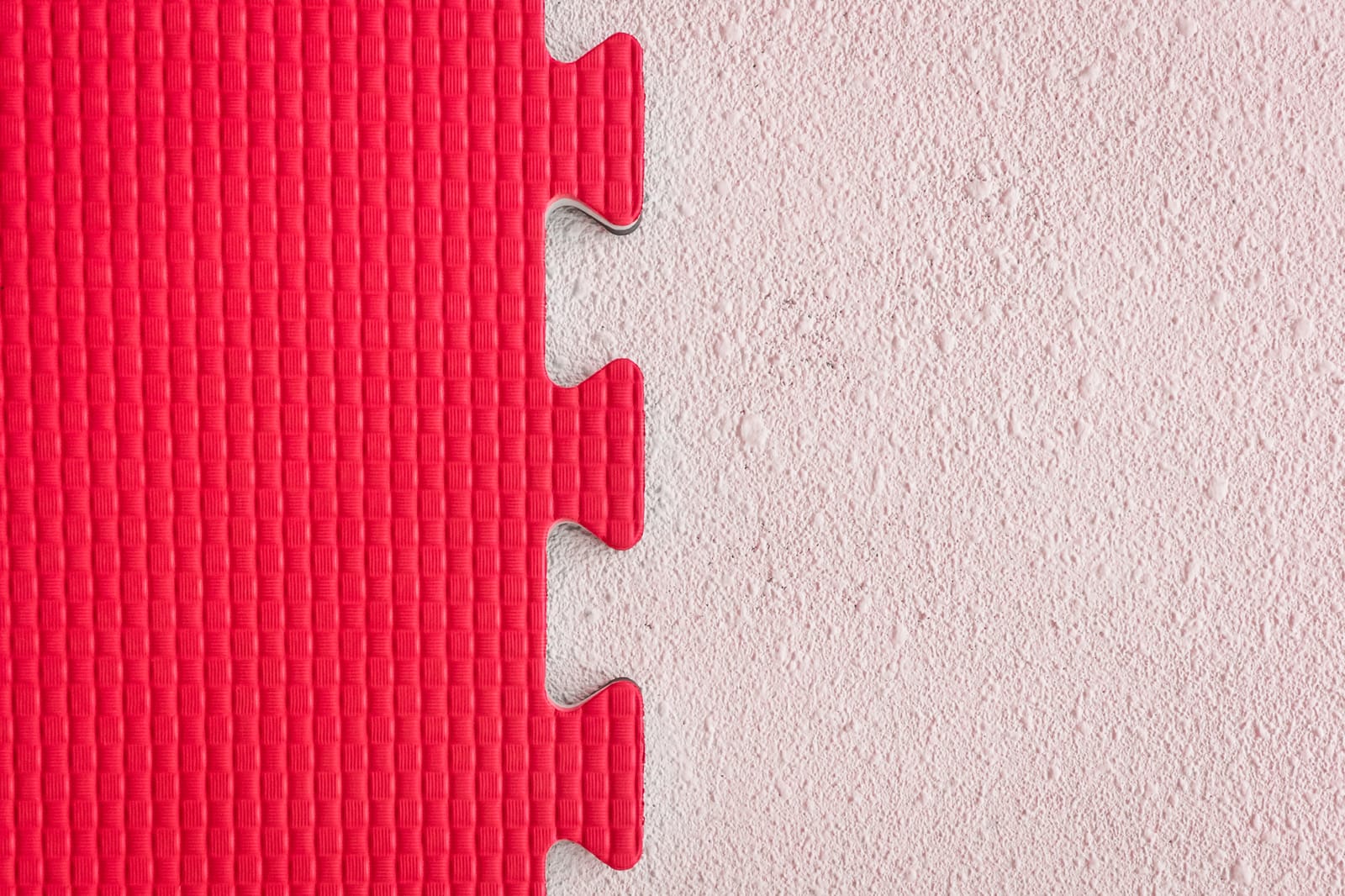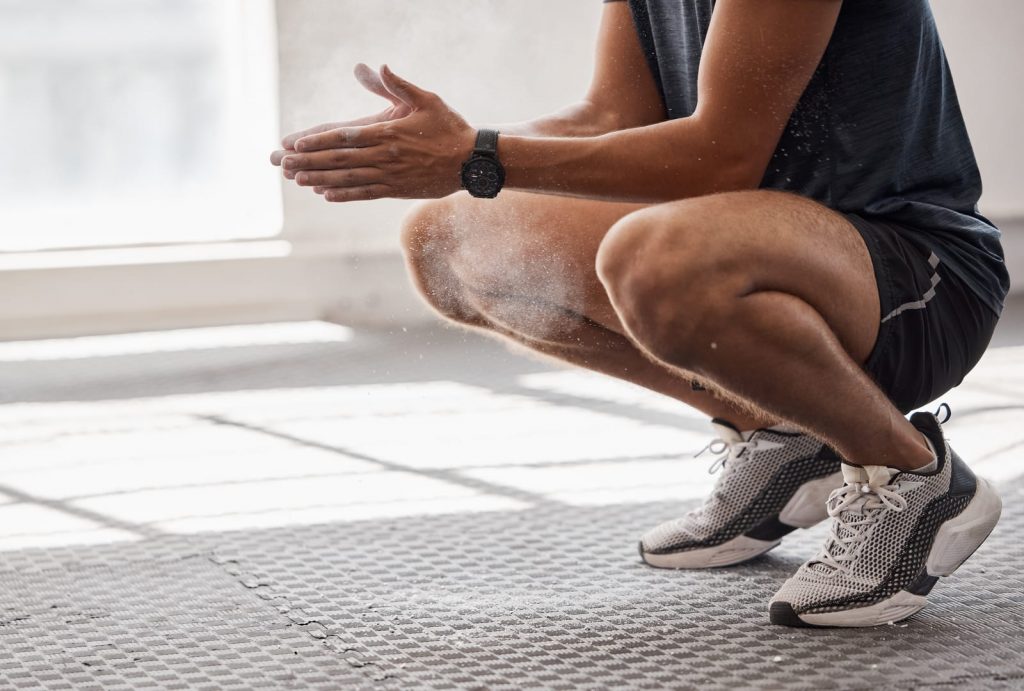
Importance of Proper Home Gym Flooring with Rubber Gym Floor Mats & Tiles
Did you know that the type of flooring you choose for your home gym can have a significant impact on your workout experience? Research has shown that the right home gym flooring can make all the difference. From providing added support and traction to reducing noise and shock absorption, proper flooring is an essential addition to any home gym space.
Imagine this: you’re in the zone, pushing yourself to new limits, and giving it your all during a high-intensity workout. The last thing you want is a slippery surface or an uncomfortable floor impacting your performance. That’s where high-quality gym and home gym flooring comes into play. By investing in materials specifically designed for fitness areas, you’ll create a safe and supportive environment that not only protects your gym equipment but also gives you peace of mind as you work towards your fitness goals.
Understanding the Importance of Rubber Gym Flooring
Impact of Flooring on Exercise Performance and Safety
Proper flooring is a crucial aspect of setting up your home gym. It plays a significant role in both exercise performance and safety. When you’re sweating it out, you want to make sure that your flooring provides the right support and stability for your workouts.
Benefits of Shock Absorption for Joint Protection
One of the key benefits of investing in proper gym flooring is shock absorption. This feature helps protect your joints from unnecessary strain during high-impact exercises like running or jumping. The cushioning effect provided by quality flooring can reduce the risk of injuries, such as sprains or stress fractures.
Prevention of Floor Damage and Noise Reduction
Not only does proper gym flooring protect you, but it also protects your floor! Intense workouts can take a toll on surfaces like hardwood or carpeting, causing scratches, dents, or even permanent damage. By installing suitable gym flooring, you create a protective layer that prevents these issues.
Quality gym flooring helps minimize noise disturbances caused by equipment impact or footfalls during workouts. This is especially important if you live in an apartment building or have neighbors close by who may be sensitive to excessive noise.
By choosing the right type of gym flooring for your home setup, you ensure a comfortable and safe environment for your workouts while safeguarding both yourself and your floors from potential damage.
Read Also: Why Gym Floor Mats are Essential for Safety and Comfort
Best Home Gym & Commercial Gym Flooring Options
Rubber, foam, and vinyl are three popular choices for gym flooring materials. Gym rubber flooring is known for its durability and shock absorption properties, making it ideal for heavy weightlifting or high-intensity workouts. Foam flooring, on the other hand, offers excellent cushioning and comfort, which can be beneficial for activities that involve a lot of jumping or floor exercises. Vinyl flooring is a versatile option that provides durability and easy maintenance while offering a variety of designs to suit your aesthetic preferences.
How to Choose the Right Rubber Gym Tiles Flooring and Gym Mats
When selecting the best flooring option for your home gym setup, several factors should be taken into consideration. First and foremost is the type of exercise you’ll be doing. If you primarily engage in weightlifting or use heavy dumbbell and barbell equipment, rubber flooring may be the most suitable choice due to its ability to withstand impact and protect your subfloor. However, if cardio workouts or bodyweight exercises are more your style, foam or vinyl flooring might offer the necessary support and cushioning.
Another crucial factor to consider is budget. Rubber flooring tends to be more expensive than foam or vinyl options but offers superior longevity and durability. Maintenance requirements should also factor into your decision-making process. While rubber floors require minimal upkeep, foam, and vinyl floors may need regular cleaning to prevent odor buildup.
Comparing Durability, Comfort, and Maintenance Requirements
Durability is essential. Rubber flooring excels in this aspect with its high resistance against wear and tear over time. Foam flooring provides excellent comfort underfoot due to its cushioning properties but may not be as durable as rubber options in the long run. Vinyl flooring strikes a balance between durability and comfort while offering low maintenance requirements.
Installation & Maintenance of Home Gym Floor Mats and Jigsaw Mats

DIY Installation Tips for Different Types of Gym Floors
DIY Installation Tips for Different Types of Gym Floors
Installing the right flooring in your home gym is crucial for creating a safe and functional workout space. There are a few options to consider. For concrete floors, interlocking rubber tiles are a popular choice as they provide excellent shock absorption and durability. Simply lay them down like puzzle pieces, ensuring a snug fit.
If you prefer the look and feel of hardwood or laminate flooring, opt for floating floor systems. These consist of planks that lock together without the need for adhesive or nails. They can be easily installed over any level surface, including concrete.
For those who want extra cushioning during high-impact workouts, foam tiles are an excellent option. They come in various thicknesses and can be easily assembled by interlocking the pieces together.
Cleaning and Maintenance Guidelines to Prolong the Lifespan
Proper cleaning and maintenance are essential to keep your home gym flooring in top condition. Regularly sweep or vacuum the floor to remove dust and debris that can cause scratches or damage over time. Use a damp mop with mild soap or a specialized gym floor cleaner to clean up any spills or stains.
To protect your flooring from excessive wear, placemats under heavy equipment like treadmills or weight benches. Avoid dragging weights or other equipment across the floor as this can cause scratches or dents.
Protecting the Subfloor from Moisture or Impact Damage
Moisture can be detrimental to both your gym flooring and subfloor. To prevent moisture-related issues such as mold growth or warping, consider using vapor barriers beneath your gym flooring.
In addition to moisture protection, it’s important to safeguard your subfloor from impact damage caused by heavy weights being dropped repeatedly. Invest in quality rubber mats specifically designed for weightlifting areas to absorb shock and protect both your flooring and subfloor.
By following these installation and maintenance tips, you can ensure that your home gym flooring remains in top-notch condition for years to come. So, get ready to break a sweat and crush those fitness goals without worrying about the state of your floors!
Read Also: How to Cut Rubber Gym Mats? Step-By-Step Rubber Gym Flooring Guide
Shop Rubber Home Gym Mats and Flooring in Melbourne
One of the most important factors to consider is the flooring. The right flooring can make a significant difference in your workout experience and overall safety.
Factors to Consider when Buying Gym Flooring
Cost, quality, and warranty are three crucial factors to consider when purchasing gym flooring. While cost is an important consideration for many people, it’s essential not to compromise on quality. Investing in high-quality materials will ensure durability and longevity, saving you money in the long run. Check if the manufacturer offers a warranty as it provides added peace of mind.
Researching Reputable Suppliers or Manufacturers
Before making a purchase, take the time to research reputable suppliers or manufacturers of gym flooring. Look for companies that have been in business for several years and have positive customer reviews. Reading customer feedback can give you valuable insights into the product’s quality and performance.
Reading Customer Reviews Before Making a Purchase
Customer reviews are an excellent source of information when buying gym flooring. They offer real-life experiences from individuals who have already used the product. Pay attention to both positive and negative reviews to get a balanced perspective. Look out for comments on durability, ease of installation, comfort level, and overall satisfaction.
Remember that different types of gym flooring are available such as rubber tiles, foam flooring, or vinyl options. Consider your specific needs and preferences before making a decision.
By considering these factors and doing thorough research before purchasing gym flooring, you can ensure that you invest in high-quality materials that will enhance your home gym setup.
Setting Up Your Home Gym with the Right Gym Flooring and Gym Mats
Step-by-step Guide for Preparing the Space
To ensure a proper home gym setup, it’s crucial to start with the right flooring. Here’s a step-by-step guide to help you prepare your space for installation.
-
Clear the area: Before installing any flooring, make sure to clear out the space completely. Remove any furniture or obstacles that may hinder the installation process.
-
Inspect and clean: Thoroughly inspect your floor for any damage or unevenness. Address any issues before proceeding with the installation. Clean the surface to remove dust and debris, ensuring a smooth foundation.
-
Measure accurately: Calculate the required square footage of flooring needed for your home gym setup. This will help you avoid purchasing excess materials or falling short during installation.
-
Choose the right type of flooring: Consider your exercise needs when selecting flooring options for your home gym. Hardwood floors provide durability and stability, while floor tiles offer easy maintenance and shock absorption.
Tips on Layout Planning Based on Exercise Needs
Once you have prepared your space, it’s time to plan out the layout of your home gym based on your exercise needs. Here are some tips to consider:
-
Determine workout routines: Identify the types of workouts you’ll be performing in your home gym. This will help you allocate sufficient space for different exercises and equipment.
-
Optimize space utilization: Plan an efficient layout that maximizes available space without compromising functionality and safety. Arrange equipment strategically to create designated areas for different exercises.
-
Consider impact protection: If you’re using heavy equipment or engaging in high-impact workouts, consider adding mats or commercial rubber flooring in specific areas to protect both your equipment and floors from damage.
By following these steps and considering your exercise needs when setting up your home gym with proper flooring, you can create a safe and functional environment that enhances your workout experience.
Read Also: 5 Reasons Why You Need Jigsaw Flooring Mats for Martial Arts
Shop Gym Mats and Rubber Gym Eva Flooring Now
In conclusion, choosing the proper flooring for your home gym is crucial for creating a safe and effective workout space. We have explored the importance of gym flooring, the best options available, installation and maintenance tips, as well as how to purchase quality flooring. By investing in the right flooring, you can protect your joints, prevent injuries, and enhance your overall workout experience.
Assess your needs, consider your budget, and select the home gym flooring option that aligns with your fitness goals. Whether you opt for rubber tiles, foam mats, or vinyl planks, remember to prioritize durability, shock absorption, and ease of maintenance.
With the right flooring in place, you can create a motivating environment that supports your fitness journey. Dynamo Fitness Equipment offers a wide range of gym flooring solutions including rubber floor mats, EVA jigsaw mats, exercise mats, commercial rubber gym tiles, and more. Check out our wide selection of gym flooring designed to withstand, non-slip, and built to last.
